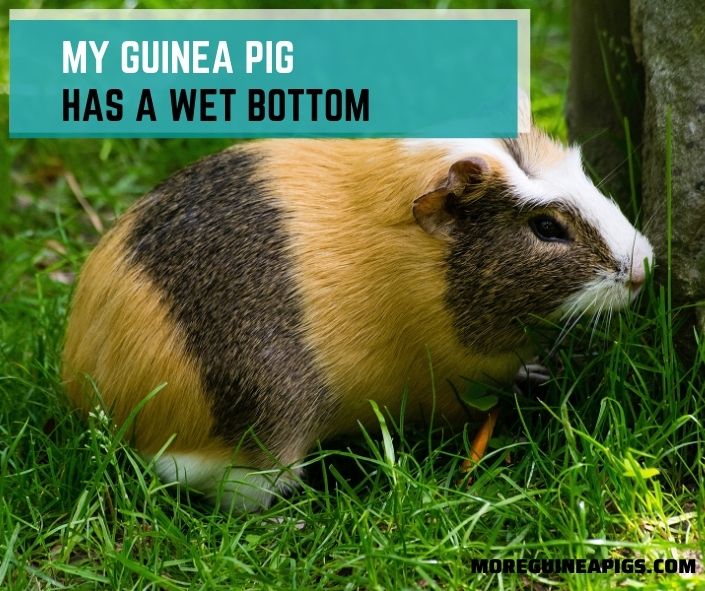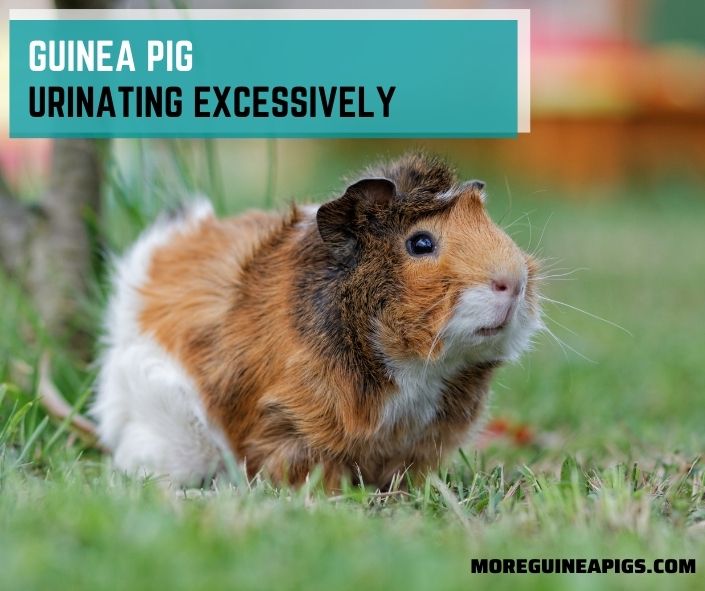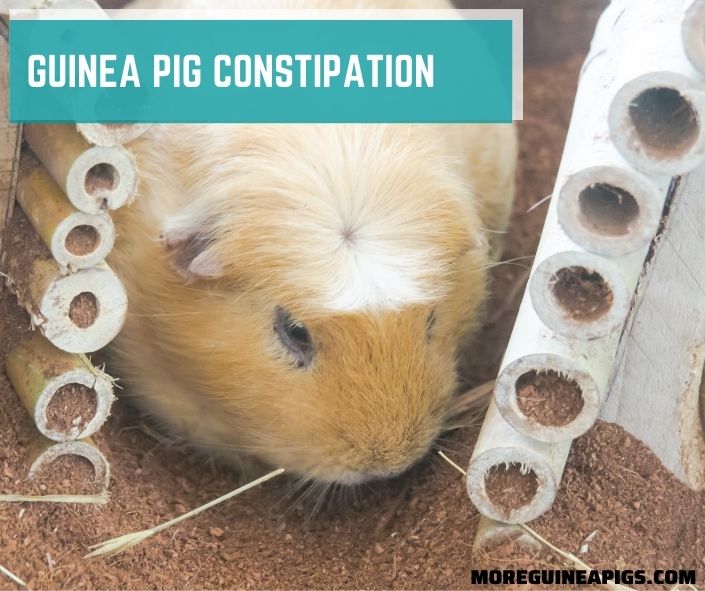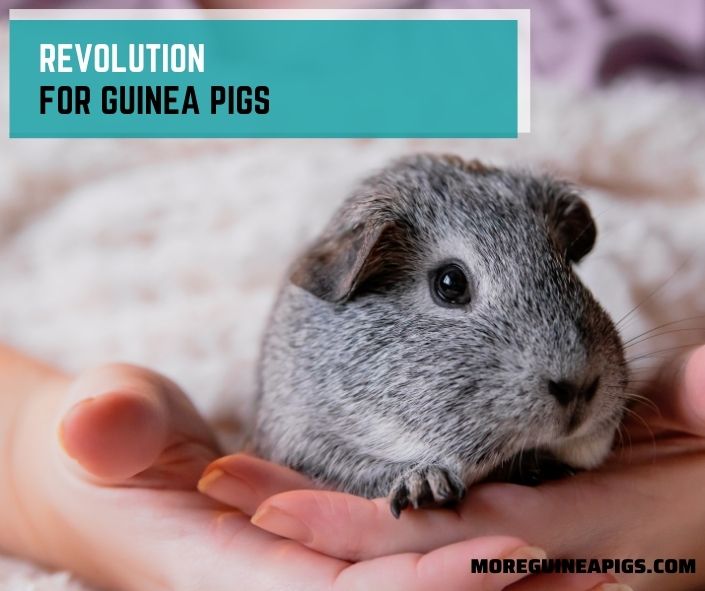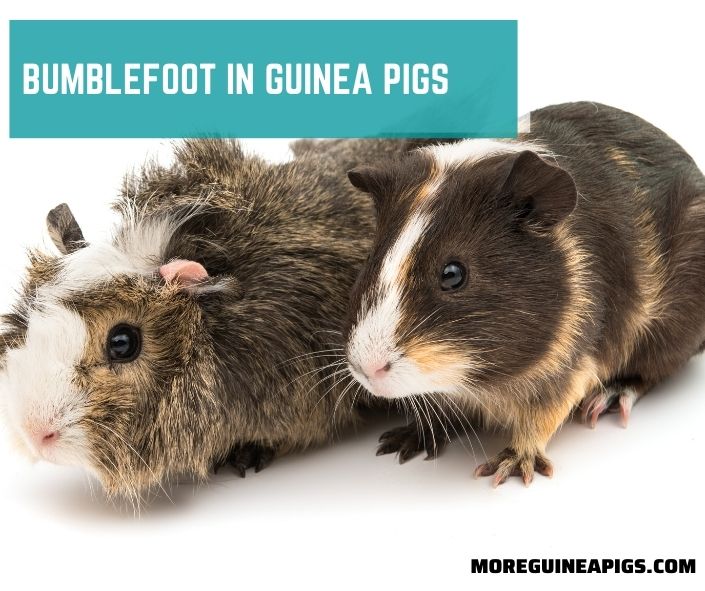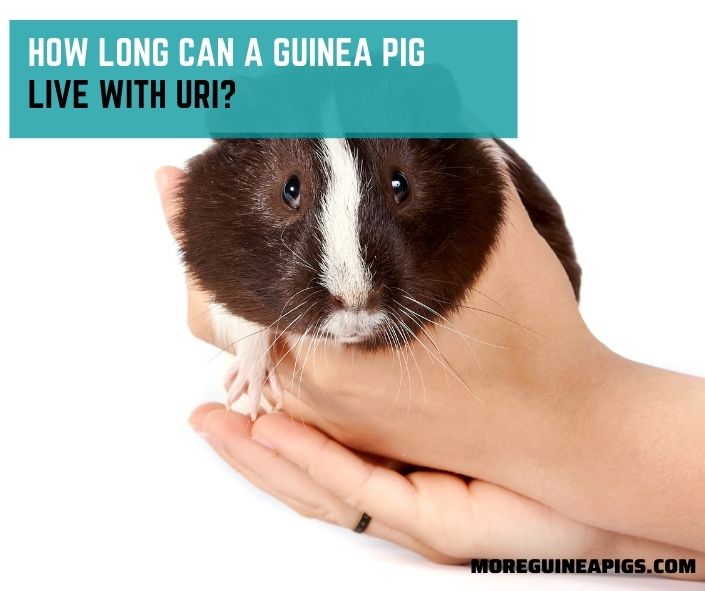My Guinea Pig Has A Wet Bottom
You notice that your guinea pig has a wet bottom all of a sudden, or notice that they have difficulties in urinating. You’ve also noticed that not only is the bottom part wet, but also has a foul smell with loose and watery stool. Of course, anyone would be worried.
Here we’re going to talk about why your guinea pig has a wet bottom all of a sudden, what are the signs, and how to treat this, so let’s not keep your guinea pig waiting alright?
Why Your Guinea Pig Has A Wet Bottom?
If you notice that your guinea pig suddenly has a wet bottom that has a strong smell, this is a sign of Urinary Tract Infection (UTI), you should have it checked immediately to the vet. It is fine if there is no strong smell, then they might just have urinated on themselves or accidentally sat on areas where they urinated.
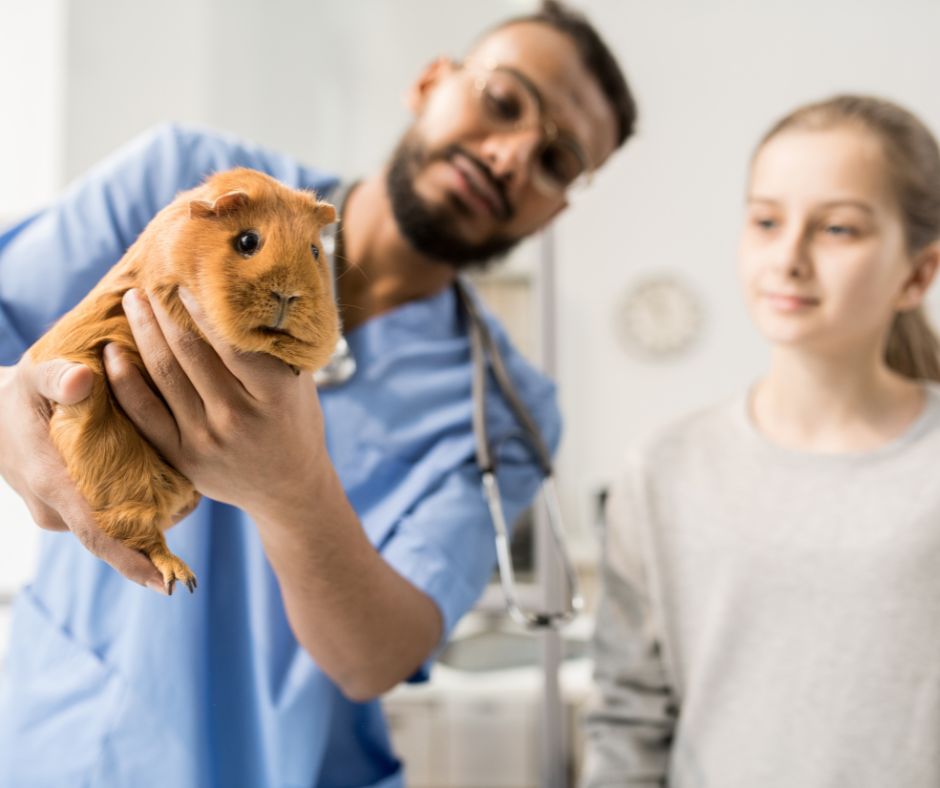
Urinary Tract Infection (UTI)
Urinary Tract Infection or UTI on guinea pigs may be common but is still alarming. The most prominent signs that your guinea pigs have UTIs are a wet bottom accompanied by a strong smell or foul odour, and they make sounds or cry during peeing.
Other signs include fever, pain when touching their lower abdomen, weight loss, lethargy, and lack of appetite, these signs usually show after 3-4 days upon infection, so it is imperative to have them checked up by the vet.
Treatments are first to confirm these medical concerns and treat them effectively, a clinical checkup at your local veterinarian is required right away. Antibiotics and maybe more testing (such as faecal tests) may be required.
Antibiotics that can be administered are enrofloxacin. Meloxicam can also be used for a couple of days or weeks, depending on the severity of the UTI. Owners should also encourage more frequent drinking of water to counter the toxins and bacteria.
Provide clean and fresh water regularly, add infused fruits such as cucumber to encourage drinking. You can also use unsweetened and natural cranberry juice, give using a syringe or infuse it with their water bowls, change regularly as well.
Enteritis Accompanied by Liquid Diarrhea
Signs of Enteritis accompanied by Liquid Diarrhea include lethargy, dehydration, appetite loss, sunken eyeballs, rough hair coat, soiling of fur near the genital and anal area, and the most prominent and visible, liquid or loose and watery stool.
If you see any of these signs, have your pig checked up asap to avoid discomfort for them.
Causes of these are a bacterial and parasitic infections that can lead to diarrhea in guinea pigs. Sometimes overfeeding is also a cause that has high sugar and little to no fibre is also a common cause.
But don’t worry, this is easily treated once your vet has diagnosed that this is diarrhea. Treatment is relatively easy, which is making sure they drink plenty of water, so it is important to encourage rapid drinking for the pigs.
We should use a probiotic supplement designed for guinea pigs, which will be available in pet shops or from vet clinics. If their diarrhea gets worse, your vet may administer antibiotics when necessary.
The Cage Is Being Left Too Long Between Cleans
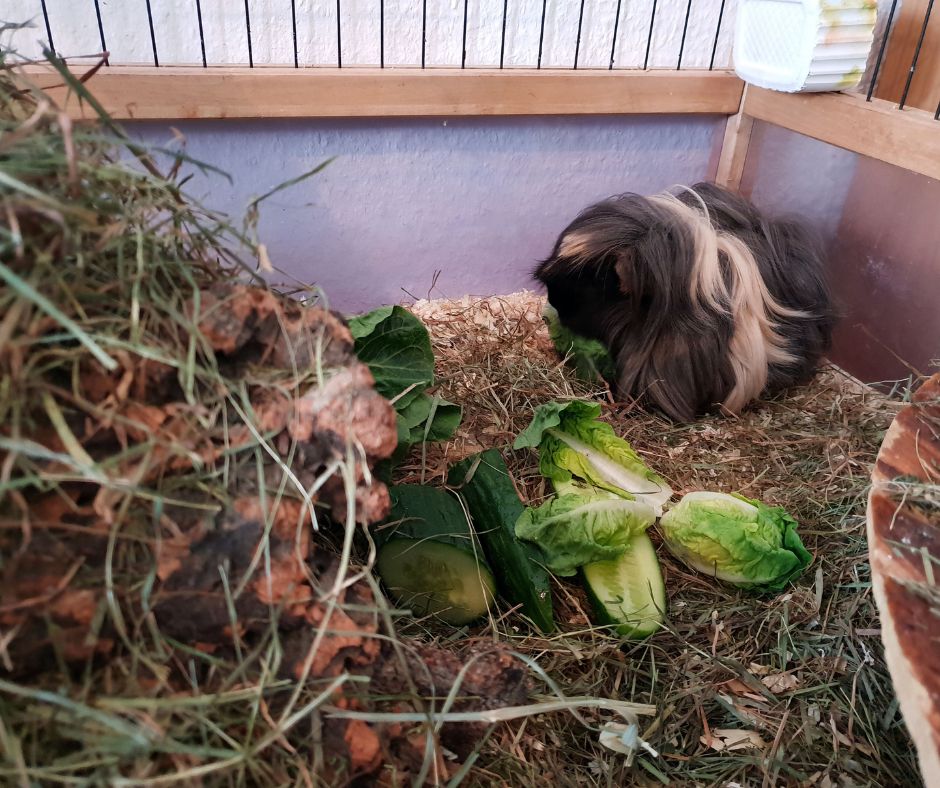
Guinea pig cages play an important role in their health, so it is definitely important to maintain a clean cage. Clean regularly like once a week no matter what reason.
If the cage is left too long between cleans, then the basic premise of this would be that the cage would have a musty or foul odour, the beddings are soiled, and in worst cases, depending on the bedding, fungi could grow.
The treatment here is simple as well. Just clean the cage by means of removing the guinea pigs, then remove everything inside the cage, spray with specialized cleaning disinfectant, or warm water mixed with vinegar, wipe everything off then let dry.
You might also need a cleaning brush to clean off the corners as well, just in case.
After this, change the substrate or bedding that you use, be careful with the dampness so to remove this, use a dry and clean cloth. then place all the items again inside, then put back your little guinea pigs. See? Easy as 1-2-3!
carefresh 99% Dust-Free Natural Paper Small Pet Bedding with Odor Control
How To Clean A Guinea Pig’s Wet Bottom?
There are two ways of cleaning your guinea pig’s wet bottom. The first one is using guinea pig wet wipes that you can purchase online, or in your local vet store. Avoid using commercial products or wet wipes for humans, as these contain a strong ingredient that could cause hair loss for guinea pigs.
The next one is giving them a warm bath but only doing so regularly such as once a week. Guinea pigs are known to be relatively tidy and clean creatures so they can clean themselves and are not really fond of baths.
The last one is called a dry cleaning process and it goes as:
- Rub unscented and natural flour across their bottom, avoid using powder as this has the material Talc which is harmful to the guinea pig.
- Rub that flour or powder across your guinea pigs anal or genital area and allow it to mix with their fur.
- Brush out gently the area using a comb
- Remove and clean the area with a soft towel
If you’re interested in how to do this, below is a full video of how to give a guinea pig a bath!
Arm & Hammer for Pets Super Absorbent Cage Liners for Guinea Pigs
Home Remedies For Urinary Tract Infection and Diarrhea
Drinking water is a key to anyone’s health as this is most especially true for sick guinea pigs.
Frequent drinking water is encouraged whenever your guinea pig has UTI or Diarrhea as this can help cleanse the body and keep out the bacteria present in the guinea pig. Water also helps with dehydration which is a common symptom for both UTI and Diarrhea.
Cage cleaning regularly is also tied with the health of guinea pigs. So it is always important to maintain a clean cage for guinea pigs.
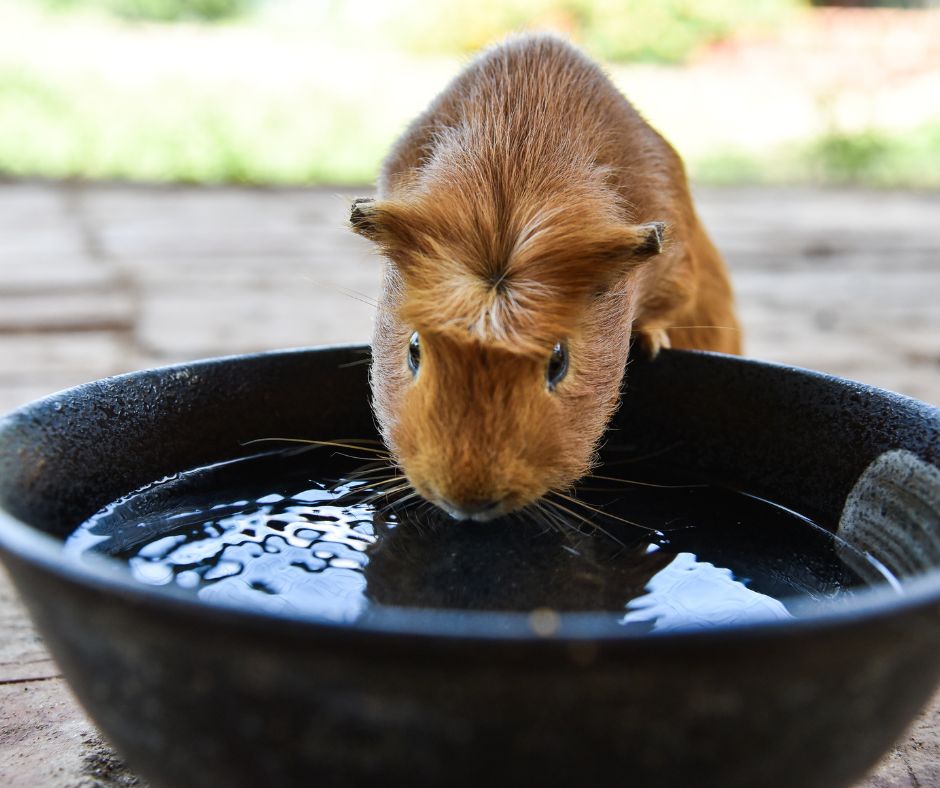
Do You Need To Worry If A Guinea Pig Wet Bottom?
If the guinea pig’s wet bottom has a foul or strong smell, this is most likely a sign of Urinary Tract Infection (UTI) and if the wet bottom has loose or wet stools, you should go to a vet for a checkup immediately to have a proper diagnosis for your pet.
But if it’s just wet, no smell, and you don’t seem to notice any difficulty in urinating, there are no squeaking sounds when they urinate, or any blood in urine, then just clean the cage and clean your guinea pig’s wet bottom.
LATTOOK Pet Cage Cleaner Set 10pcs
Conclusion
Seeing your guinea pigs have UTI or Diarrhea or being in discomfort is sad for any owner even if these are common issues.
Remember that drinking water more frequently helps this, and scheduling a regular vet check-up, can help prevent this, and maintain a fresh and clean water bowl that is changed regularly for the overall health of your guinea pig.
We hope that the information you found in this article proves to be helpful for you and your guinea pig!
